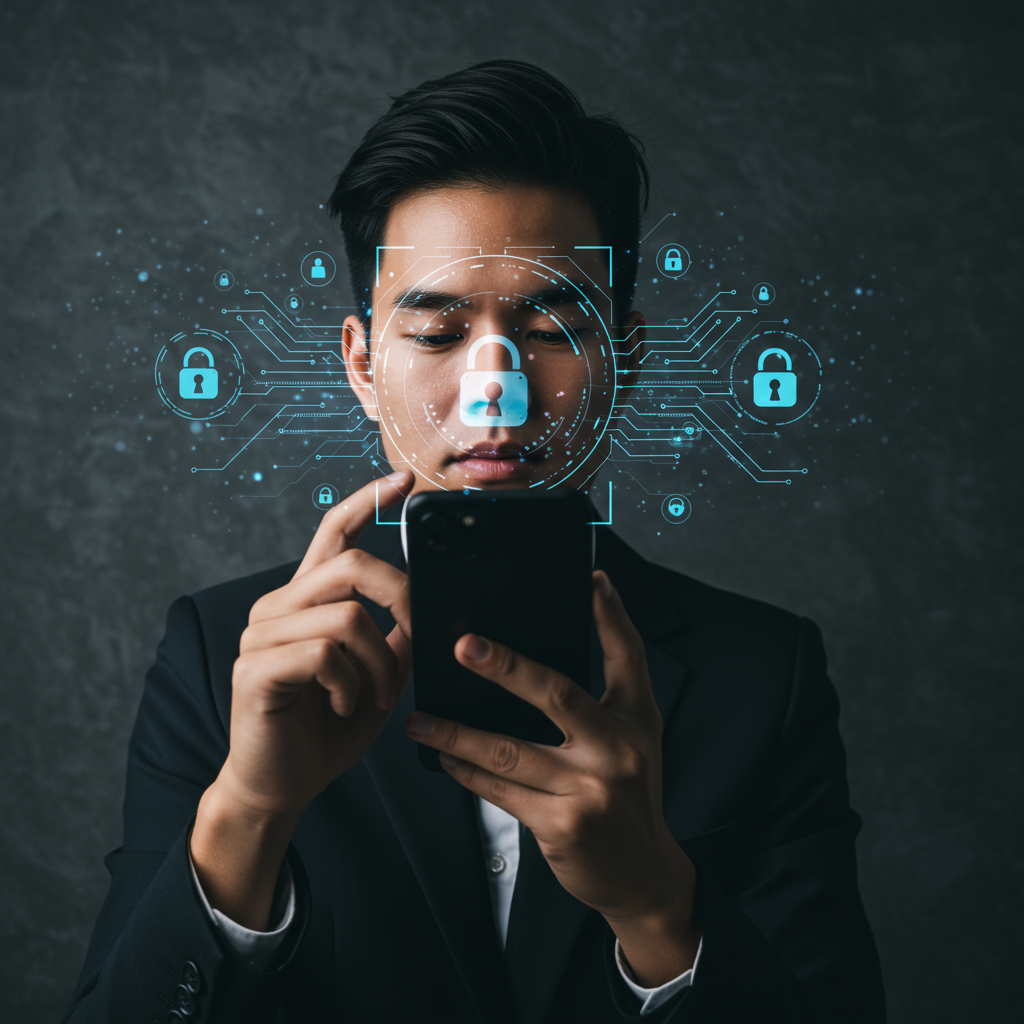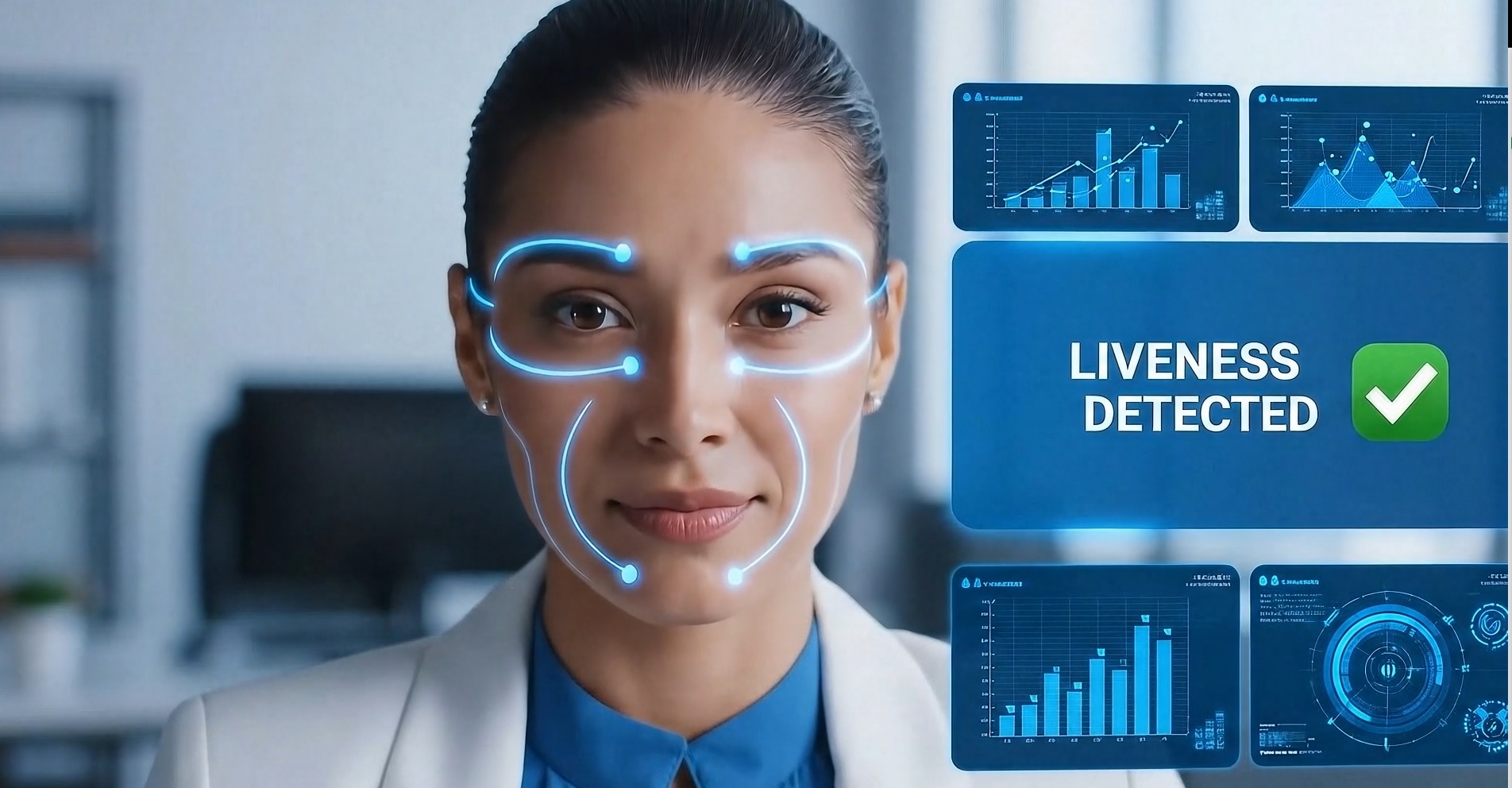In our rapidly digitalizing world, establishing genuine trust online is paramount. As more of our lives move to the digital sphere, verifying who we are interacting with becomes a critical challenge. This is where advanced digital identity verification technologies step in. They protect businesses and consumers from fraud while streamlining essential online processes. This comprehensive guide explores the fascinating history, underlying science, and crucial role of Know Your Customer (KYC), liveness detection, face recognition, and OCR systems in building a secure digital future.
The Foundation of Trust: Understanding KYC
Know Your Customer (KYC) is far more than a simple compliance checkbox; it’s the cornerstone of secure financial and digital interactions. This vital process ensures that businesses verify the identity of their clients. It also assesses their suitability and potential risks before, during, and after a business relationship begins.
What is KYC?
At its core, KYC is a set of regulations and procedures. These are designed to prevent financial crime like money laundering and terrorist financing. Historically, this involved extensive paperwork and in-person checks. Today, digital KYC processes leverage technology for speed and accuracy. The shift from manual to digital verification is a major leap forward. It makes onboarding quicker for customers and more efficient for businesses.
Key Components of Digital KYC
A robust digital KYC process combines several technological layers. Each layer adds to the overall security.
Identity Document Verification: This involves checking the authenticity of government-issued IDs. These include passports, driver’s licenses, or national ID cards. Advanced systems look for security features and signs of tampering.
Biometric Verification: Often using face recognition, this confirms the person presenting the ID is indeed its rightful owner.
Proof of Address: Utility bills or bank statements verify the customer’s physical location.
Sanctions and Adverse Media Screening: This checks databases for individuals linked to criminal activities or sanctions lists. This continuous monitoring is crucial for ongoing compliance.
Beyond the Document: The Power of Liveness Detection
While verifying identity documents is crucial, it’s not enough on its own. Sophisticated fraudsters can use photos or videos to spoof identity. This is where liveness detection becomes indispensable. It ensures that the person interacting with the system is a living, present individual.
What is Liveness Detection?
Liveness detection is an anti-spoofing technology. Its main goal is to confirm that a real person, not an impostor, is attempting verification. Imagine someone holding up a photo of an ID. Liveness detection thwarts such attempts. Without it, even perfect face recognition could be fooled. It adds a critical layer of real-time security.
The Science Behind Anti-Spoofing
Early liveness methods asked users to perform actions like blinking or turning their head. However, these “active” methods can be cumbersome and vulnerable to advanced spoofs. Modern solutions employ passive liveness detection. This uses artificial intelligence and machine learning to analyze subtle biological cues.
Computer Vision Algorithms: These analyze facial textures, light reflections, and even micro-expressions.
3D Depth Analysis: Some systems use depth sensors to differentiate a flat image from a three-dimensional face.
Infrared and Thermal Imaging: These can detect heat signatures specific to living tissue.
These advanced techniques combat sophisticated attacks. This includes high-resolution photos, deepfake videos, and even realistic 3D masks. The science behind liveness detection continuously evolves to stay ahead of fraudsters.
Face Recognition: The Modern Identity Anchor
Face recognition technology has rapidly transformed how we verify identities. From unlocking smartphones to boarding planes, it’s becoming ubiquitous. In digital identity verification, it serves as a powerful biometric anchor.
How Face Recognition Works
The process of face recognition involves several steps. First, an image or video frame is captured. Next, the system detects a face within that image. Key facial features, or “landmarks,” are then identified. These include the distance between eyes, nose bridge length, and jawline contours.
Feature Extraction: These unique measurements are converted into a numerical code. This is called a biometric template. This template is unique to each individual.
Comparison: The template is then compared against a reference image. This might be a photo on a government ID or a stored database entry.
Deep Learning: Modern face recognition relies heavily on deep learning and neural networks. These complex algorithms achieve remarkably high accuracy. They can also handle variations in lighting, angles, and facial expressions.
Historical Journey and Advancements
The concept of face recognition dates back to the 1960s with early attempts using geometric models. However, it was the explosion of AI and computational power in the 21st century that truly revolutionized the field. Accuracy rates soared. Processing speeds dramatically increased.
Beyond KYC, face recognition finds applications in numerous areas. This includes physical access control and border security. It helps personalize user experiences. Despite its advancements, ethical considerations regarding privacy and potential biases remain vital discussions. Developers are actively working to mitigate these concerns.
OCR Systems: Digitizing Identity Documents
Optical Character Recognition (OCR) might seem less glamorous than biometrics. However, it plays a foundational role in efficient digital identity verification. OCR acts as the digital bridge between physical documents and data systems.
The Role of OCR in Digital Verification
OCR systems enable the automatic extraction of text from images. Imagine scanning a passport or driver’s license. OCR analyzes the image. It then identifies and converts the printed text (name, date of birth, document number) into machine-readable data.
Automation: This automates data entry, significantly reducing manual effort.
Accuracy: It minimizes human error, ensuring precise data capture.
Speed: Data extraction happens in seconds, speeding up the entire verification process.
Integration: OCR-extracted data seamlessly feeds into KYC workflows, liveness detection, and face recognition systems.
Evolution of OCR Technology
Early OCR technology was quite basic. It struggled with varying fonts, poor image quality, or complex layouts. Modern OCR, however, is highly advanced. It is powered by artificial intelligence and machine learning.
Today’s OCR can handle a vast array of document types. It adapts to different languages and character sets. It intelligently extracts relevant fields, even from slightly damaged or low-quality images. Challenges still exist with glare, smudges, or highly unusual document designs. Continuous improvements are being made through ongoing AI research.
The Synergy of Technologies: A Unified Approach
The true power of digital identity verification lies in integrating these distinct technologies. KYC, liveness detection, face recognition, and OCR systems are not standalone tools. They form a robust, multi-layered defense. Each component strengthens the others, creating a formidable barrier against fraud.
Consider a typical digital onboarding process. First, a user uploads their ID. An OCR system quickly extracts all key data. Simultaneously, face recognition matches the user’s live selfie to the ID photo. Critically, liveness detection ensures the selfie is of a real, present person. Finally, this verified identity information feeds into KYC checks. These systems work in concert. They enhance security, improve accuracy, and streamline the user experience. This holistic approach makes the process fast, secure, and compliant.
Challenges and the Future of Digital Identity Verification
Despite rapid advancements, the field of digital identity verification faces ongoing challenges. The landscape of fraud constantly evolves. Regulatory frameworks are also becoming more complex. Staying ahead requires continuous innovation.
Navigating Regulatory Landscapes
Different regions and industries have varying compliance requirements. Data privacy laws like GDPR and CCPA add further complexity. Developing solutions that are both effective and globally compliant is crucial. Businesses need flexible, adaptable identity verification platforms. These must meet diverse legal obligations without compromising security.
Emerging Threats and Innovations
The rise of deepfakes and advanced spoofing techniques presents new challenges. Identity verification technologies must constantly evolve to counter these threats. Future innovations are likely to include:
Continuous Authentication: Verifying identity throughout a session, not just at login.
Blockchain for Identity: Decentralized identity systems offering enhanced security and user control.
Federated Identity: Allowing users to verify their identity once and use it across multiple services.
Ethical AI: Focusing on fairness, transparency, and bias reduction in algorithms.
The goal is to create a seamless, secure, and user-friendly experience. This protects individuals and organizations from ever-evolving digital risks.
Frequently Asked Questions
What is the primary difference between liveness detection and face recognition in digital identity verification?
Liveness detection and face recognition serve distinct yet complementary roles. Face recognition primarily verifies who you are by matching your facial features to a known identity (like a photo on an ID document). It confirms identity similarity. On the other hand, liveness detection verifies that the person presenting themselves is a real, living human being at that moment, rather than a photo, video, or mask used by a fraudster. It’s an anti-spoofing measure. Both are crucial for robust digital identity verification, ensuring the user is both the right person and a real person.
How do businesses choose the right combination of KYC, liveness, and OCR systems for their specific needs?
Choosing the right combination depends on several factors. Businesses first assess their industry’s regulatory requirements (e.g., finance has stricter KYC). They also consider their target customer’s technical comfort and expected user experience. The level of fraud risk is critical; high-risk operations demand advanced liveness detection and thorough KYC. Finally, integration capabilities with existing systems and scalability for future growth are important. Many businesses opt for comprehensive identity verification platforms that bundle these technologies, often powered by AI, to ensure a seamless, secure, and compliant digital onboarding process.
Why is investing in advanced digital identity verification crucial for businesses today, beyond just compliance?
Investing in advanced digital identity verification offers benefits far beyond mere regulatory compliance. While meeting KYC/AML regulations is vital, robust systems also drastically reduce the financial losses from fraud. They improve customer experience by offering faster, smoother digital onboarding processes, leading to higher conversion rates and customer satisfaction. Strong security builds trust, enhancing a brand’s reputation. Furthermore, efficient identity solutions can automate tasks, reducing operational costs and freeing up human resources. It’s a strategic investment that drives growth, security, and efficiency in the digital age.
Conclusion
The convergence of KYC, liveness detection, face recognition, and OCR systems forms the backbone of modern digital identity verification. These technologies, born from years of scientific advancement, are constantly evolving. They work in tandem to create a secure, efficient, and trustworthy online environment. As digital interactions become more prevalent, understanding and leveraging these powerful tools is no longer optional. It’s an essential strategy for businesses and individuals alike. Embracing robust identity solutions will ensure digital trust, combat fraud, and unlock the full potential of our connected world.
Looking for a complete solution in this space?
With our all-in-one Face Recognition, Liveness Detection & KYC Verification System, security is no longer a compromise. You get real users, real identities, and real protection—all in one powerful platform.





